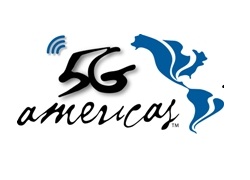5G technical standardisation and successful trials have led to the first global commercial 5G deployments. The number of commercial launches and broader deployments of 5G are expected to increase over the next few years, particularly in North America and key markets across Asia-Pacific and Europe.
“What will be needed as the next important elements for 5G success are network density coupled with the availability of sufficient internationally harmonised low band, mid band, and high band spectrum,” commented Chris Pearson, president of 5G Americas.
5G Americas, the industry trade association and voice of 5G and LTE for the Americas,announced the publication of 5G Spectrum Vision outlining the spectrum inventory opportunities for 5G in the Americas and other parts of the world.
The white paper brings forward a pertinent industry analysis of the characteristics of a range of bands along with challenges and opportunities in using different bands for 5G. The paper identifies bands that have a potential to be used for 5G services and also makes recommendations on mechanisms for spectrum clearing, spectrum sharing, and necessary industry and regulatory actions towards more licensed spectrum for progress of 5G technologies.
“5G Spectrum Vision accumulates a great amount of spectrum inventory information and reviews the opportunities as well as the limitations that may be encountered and the actions needed by the regulatory officials for spectrum bands covering low, mid, and millimeter-wave spectrum. The paper makes recommendations for establishing a competitive spectrum portfolio for 5G,” stated Bill Chotiner, director, Radio Access Network Evolution at Ericsson, and a co-leader of the white paper working group.
There are key factors that will assure investment in, and the success of 5G, that are largely contingent upon the availability of a sufficient supply of spectrum. 5G Americas’ report, 5G Spectrum Vision, offers recommendations including:
- Operators need to have access to a sufficient supply of harmonised low band, mid band and high band spectrum to deliver on 5G promises
- Processes in North America must accelerate to introduce spectrum necessary for supporting the developing global 5G ecosystem
- Spectrum identification and allocation opportunities below 3 GHz must continue to be considered
- Licensed use of spectrum in the range 7-24 GHz must also continue to be explored
- All or a significant portion of the 3.70-4.20 GHz band for licensed flexible deployment should be made available as soon as possible
Chris Pearson added, “It is encouraging to watch the market and policy dynamics towards a favorable climate for 5G – largely developed by regulators acting to identify and allocate more licensed spectrum. Considerable developments in the North America region towards availability of new low, mid and high band spectrum will pave the way for a connected 5G world.”
5G Spectrum Vision was written by members of 5G Americas and is available for free download on the 5G Americas’ website. Ahmad Armand of T-Mobile and Bill Chotiner of Ericsson led the white paper working group with support from 5G Americas’ Board of Governors who participated in the development of the white paper. The report is available for free download on the organisation’s website.
Comment on this article below or via Twitter: @VanillaPlus OR @jcvplus






